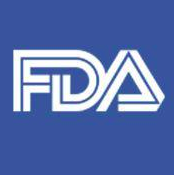This bag of flour sits in my pantry, unopened. It is one of the products that General Mills recalled this year because of the possibility of pathogenic Escherichia coli contamination. I don’t know how to dispose of it: Should I throw it in the regular trash, compost it, burn it?
Last week, I ran out of my “good” flour and was tempted to open that full bag of suspect flour. Even though I know (from my science background and from reading the General Mills website) that baking will destroy the bacteria, I changed my cooking plans, knowing that my elderly mother might eat the cake I had planned to make. Flour generates dust, especially when I use my giant stand mixer. Although inhaling pathogenic E. coli may not be problematic, the dust could fall into the glass of water I’m drinking or onto my sponge which wipes other surfaces that will later contact food. The pathogenic strains of E. coli associated with this recall (Shiga toxin-producing strains O26 and O121) require ingestion of only a few cells (~10) to trigger disease, so worrying about such scenarios may not be that far-fetched.
That bag of flour remains unopened, taking up space in my cupboard. It’s not the first bag from the recall that I’ve had in my possession. I threw the first bag away (with some lingering worry as it was nearly empty) and asked my husband to pick up another bag at the store. The store must not have been aware of the recall, as the new bag, the one still sitting in my pantry, was also part of the recall.
It surprised me that the store had not yet pulled the flour from the shelves. The recall has been mentioned in the press, on TV and on the websites of both the U.S. Food and Drug Administration (FDA) and U.S. Centers for Disease Control and Prevention (CDC). You can find more than 11,000 news articles with the keywords “flour recall E. coli” in a Google search. However, even with this publicity, it is astonishing how few people seem to be aware of the recall. Even after at least 63 people have been sickened and 17 people hospitalized (including one with kidney failure), the grocery store where my husband purchased the flour clearly did not pull the flour.
Anecdotally at least, consumers don’t seem to be getting the message. One of my friends had heard (from a television cooking show) that there was a new reason now to avoid eating raw cooking dough. She has a degree in microbiology, yet she couldn’t remember the reason. Another acquaintance said she’d always eaten raw cookie dough (just like she grew up drinking raw milk) and wasn’t going to stop now. Pinterest is still awash with recipes for “play clay” for kids (whose fingers often find their way into their mouths as they play). At a meeting in July attended mostly by food safety professionals, several FDA field investigators that I met confessed they were unaware of the recall and assumed that flour carried little risk for foodborne illness.
Certainly flour is a dry (low water activity, to be more scientific) food. Bacteria cannot grow in dry environments, but they can survive. It is not unusual to find some level of microbes in flour. As the General Mills blog states, “Bacteria is commonly found in flour at low levels because flour comes from milling wheat, something that is grown outdoors where bacteria are often present.”
This is not the first pathogenic E. coli outbreak in which flour was suspected to play a role. In a 2009 E. coli O157:H7 outbreak, flour used to make Nestle Toll House prepackaged cookie dough was considered a prime suspect. Shortly thereafter, Nestle began heat-treating all flour used in refrigerated cookie dough, as did other manufacturers of similar products. Heat-treating is less effective at killing pathogens in a dry material such as flour than it is for higher water activity material. It also can alter flour’s chemistry and quality (sometimes in good ways, though) and is costly, which perhaps explains why it hasn’t been embraced universally for flour (which contains only low levels of microbes and is usually eventually cooked anyway).
Another E. coli O157:H7 outbreak in 2016 may have been the result contaminated flour. This outbreak appeared to be related to a dough mix used at Pizza Ranch restaurants. However, it should be noted that in both the Toll House cookie dough and the Pizza Ranch dough outbreaks, the pathogen was never actually found in the product or any of the ingredients (including the flour) used to make the product.
CDC’s case count map for the most recent flour-associated outbreak is a patchwork of colors, demonstrating how today’s global food supply chain can affect people across the country (and in other countries: Canada was also involved in the recall). (As an aside, the outbreak map for the 2009 cookie dough outbreak looks remarkably similar to my eyes; are people in these regions especially prone to eating raw dough, or do they like to bake more often?)
It’s possible that contaminated flour has caused other illnesses in the past, but the systems allowing disparate cases to be linked were not yet in place. It can take a week or more for E. coli-related illness to develop, and the symptoms of the illness may not always lead those who are sick to the doctor. Even if they do visit the doctor, the doctor might not culture and identify the pathogen. It’s a testament to science, technology and industry and government cooperation that the 2015–2016 outbreak was linked to flour.
It did, understandably, take some time to piece together the evidence in the outbreak. Illnesses starting back from December were linked based on similar pulsed-field gel electrophoresis and whole-genome sequencing results obtained from patient isolates. At least 50 percent of those sickened who were questioned reported eating raw dough or batter the week before they became sick, and many also reported using Gold Medal brand flour.
Interestingly, more than three-quarters of those sickened have been females (as were a similar percentage of those sickened in the 2009 prepackaged cookie dough outbreak). Perhaps this is not surprising when you think about who generally uses flour. Those affected ranged from 1 to 95 years of age, with a relatively low median age of 18. This again seems consistent with who you might expect to be licking beaters or sampling cookie dough.
General Mills first announced the recall on May 31 and expanded its scope on July 1. Pathogens that genetically matched those from patients eventually were found in the flour itself and also in the General Mills Kansas City production facility, where the flour was produced on select dates between November 2015 and February 10, 2016.
Although CDC has recently (September 29) declared the outbreak investigation to be complete, with the last reported cases in September, the outbreak itself probably isn’t over because the contaminated flour is still lurking in stores and cupboards around the country. Flour has a long shelf-life.
As a consumer, I went through the recall process with General Mills. It was easy enough to do online. I promptly (within 4 days) received a coupon for a free replacement bag of flour as well as additional savings coupons.
I also received a nice letter from General Mills, but unfortunately, it didn’t tell me what to do with my potentially contaminated bag or warn me that additional contaminated products might still be available for purchase. Forty-five million pounds of flour have been recalled, which sounds like a lot. But what does “recall” mean if customers are unaware of the recall or what they need to do? I wonder how much of the recalled flour is being destroyed vs. eaten.
Because of my job, I often haunt the FDA recall list and Food Safety News, so I pay attention to recalls and know how to find out what products are specifically affected. At least by informal queries, however, it seems that not everyone does. As noted before, FDA investigators and my local grocery store were unaware of the recall at least a month after it was announced. My microbiology-trained friend admitted she had no idea how to find out if her bag of flour was one that had been recalled. Complicated supply chain webs also cloud the ability to follow recalls. The Kansas City plant makes products for other companies, some of which have recalled their products. It is not always straightforward to identify all recalled products even for someone who works in food safety.
Many bags of recalled flour likely will still be used and will cause more disease. Retailers need to promptly pull product from shelves. Use of store cards may allow retailers to notify customers that they have purchased a recalled product and direct them appropriately.
Consumers are being bombarded with warnings, so it’s not surprising that they often tune them out. Some could argue that since no deaths occurred and only 17 individuals required hospitalization, consumers’ limited attention span might be better directed elsewhere. Consumers should, however, be aware of recalls and know how to find specific recall information. They should understand that raw dough and flour both can be risky. Perhaps a food safety unit could be included in high school health courses.
General Mills acted promptly and responsibly in communicating the flour recall, yet people are still sickened long after the recalls occurred. Manufacturers need to be diligent in promptly issuing recalls and to communicate recall information effectively to consumers and to retailers. They need to understand that consumers don’t always cook food as instructed before eating it.
FDA’s new SCORE (Strategic Coordinated Oversight of Recall Execution) should expedite the removal of recalled product from store shelves. Focusing on prevention rather than reaction at the manufacturer level may, however, be the best way to prevent foodborne disease outbreaks by preventing the need for recalls in the first place. A proactive approach is what the Food Safety Modernization Act (FSMA)’s 2015 Hazard Analysis and Risk-Based Preventive Controls rule seeks to bring about. Although FSMA classifies recalls to themselves be a preventive control, the fact that people are still getting sick from General Mills flour long after the recall demonstrates that recalls are not 100 percent effective and should be a last line of hazard prevention. Better attention to preventing food hazards could help protect consumers who hear far too many warnings every day.
The author thanks Lindsey Jahn, Adam Borger, Kathleen Glass and Chuck Czuprynski for helping comments and discussion.
Wendy Bedale, Ph.D., is a science writer at the Food Research Institute, University of Wisconsin–Madison. She can be reached at 608.263.6934 or bedale@wisc.edu.




